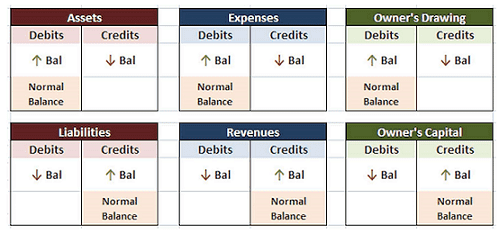Content
After using the equivalent units of production calculation, the Steelcase managers were able to determine that the ending goods in process inventory was $75,000. Putting the above together, the formula for calculating the cost of goods manufactured (COGM) metric is as follows. Before we delve into the COGM formula, reference the formula below that calculates a company’s end-of-period work in progress (WIP) balance.
What is cost of goods manufactured in cost accounting?
What is the cost of goods manufactured? The cost of goods manufactured is the calculation of a company's total costs of production during a specific time period. It's also the total amount a company spends to produce goods, turn them into inventory and put them up for sale.
You can find the number of hours worked by each employee in the accounting period in the employee records. Multiply the number of hours worked by the employee’s hourly rate of pay to determine the labor cost for that employee. Take the sum of the labor cost for all employees to find the direct labor cost incurred by the manufacturer in the accounting period. The cost of goods manufactured (COGM) refers to all the costs involved in producing a product, including direct labor, indirect labor, raw materials, and overhead costs.
Flow of Costs
COGM is crucial to many important business decisions, such as pricing, product design, and resource allocation. For example, a company can use COGM to determine the minimum selling price needed to cover the cost of producing a product and generate a profit. Starting your WIP inventory involves identifying the products in production, tracking the production process, setting up a cost accounting system, determining the cost of each product, and assigning a WIP inventory value. The calculation starts with the beginning raw materials inventory, which is the number of raw materials on hand at the beginning of the period.
The cost of goods manufactured includes direct labor, direct material, and manufacturing overhead. The purpose of the calculation is to determine the cost for items manufactured to completion during the period. The cost of goods manufactured (COGM) is a metric that calculates the total cost of producing finished goods during a specific period. This calculation includes direct materials, direct labor, and manufacturing overhead.
Chapter 1: Nature of Managerial Accounting and Costs
While the cost of manufacturing schedule includes changes in raw material and work in process inventories, the cost of goods sold focuses on the finished goods inventory. The cost of manufacturing schedule shows the flow of costs during the production process. Even though the details of this information are not included on the cost of goods schedule, this information is a necessary part of the cost of goods sold calculation. The detail regarding the changes in raw material and WIP inventory value is included in the cost of goods manufactured schedule.
He is especially interested in environmental themes and his writing is often motivated by a passion to help entrepreneurs/manufacturers reduce waste and increase operational efficiencies. Working closely with manufacturers on case studies and peering deeply into a plethora of manufacturing topics, Mattias always makes sure his writing is insightful and well-informed. The company has $5,000 worth of furniture in the making at the start of the fiscal quarter. If we enter those inputs into our WIP formula, we arrive at $44 million as the cost of goods manufactured formula (COGM).
Cost of Goods Manufactured (COGM)Defined with Examples, Formula & Calculations
Indirect materials are often included as part of the factory overhead costs in the cost of goods manufactured (COGM) calculation. While the cost of goods manufactured figure is important to management, other information on the COGM schedule is also valuable. First, the information on direct materials provides information on the total raw materials that were on hand to support production.

The cost of goods manufactured is an important KPI to track for a number of reasons. The other half of the COGM formula accounts for the work in process or WIP Inventory. WIP is a current asset in the company’s balance sheet and represents the total value of all materials, labor, and overhead of unfinished products.
Cost of Goods Manufactured vs. Cost of Goods Sold
An example of this would be if a business made a purchase of raw materials it was going to use, these materials would be recorded in the T-Account on the debit side, or left side, of the raw materials account. Thus, the total cost of goods manufactured for the period would be $265,000 ($100,000 + $50,000 + $125,000 + $65,000 – $75,000). This means that Steelcase was able to finish $265,000 worth of furniture during the period and move this merchandise from the work in process account to the finished goods account by the end of the period.
Costing has several purposes including inventory valuation, determination of selling prices, cost control as well as assisting management in decision making. Two important costs which are derived as a result of costing function are cost of goods manufactured (COGM) and cost of goods sold (COGS). COGM represents the total cost of the products that have been manufactured and are ready for sale, excluding the cost of finished goods that are still in inventory. Conversely, COGS represents the cost of the products sold to customers during a given period. The COGM formula involves adding total manufacturing costs, less the cost of work-in-process inventory, plus any beginning work-in-process list, and subtracting ending work-in-process inventory amounts. The term "cost of direct labor" refers to the wages, salary, and benefits paid directly to the product's employees.
How to calculate the cost of goods manufactured
This calculates the cost of net raw materials used for production in the given accounting period. This is useful in analyzing the costs and ways to improve the company’s profit margins. A company can garner higher profit margins even with a lower revenue if it can drastically reduce the cost of manufacturing goods. COGM is a critical component of profit and loss statements and measures the cost of producing and selling a product.

Cost of Goods Manufactured (COGM) and Cost of Goods Sold (COGS) are two closely related financial metrics in accounting that provide essential information about the cost of producing and selling a product. By incorporating this equation into business operations, management can better understand their manufacturing costs and make more informed decisions about pricing products or production processes. Additionally, understanding COGM helps businesses predict future market trends and adjust accordingly. Examples of manufacturing overhead costs include utilities, rent, insurance, depreciation, property taxes, and equipment maintenance. The easiest way to see how manufacturing costs change over time is to break them down into their components and plot them on a graph. An accountant can break down a company's production expenses for a given product mix and volume into their parts in this way.